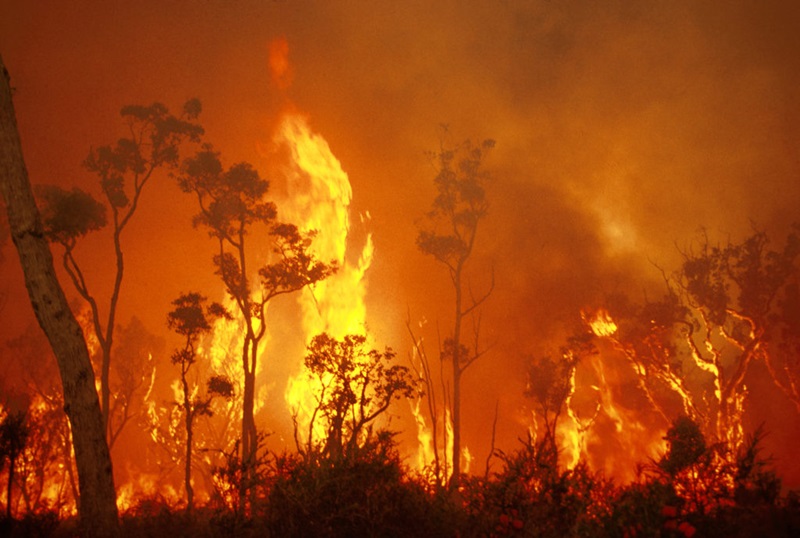Debunking BAL Reports: An Overview to Recognizing Your Building's Bushfire Threat
Wiki Article
Relevance of BAL Record in Ensuring Bush Fire Protection
In the world of bushfire defense, the relevance of a Bushfire Assault Degree (BAL) report can not be overstated. This crucial record acts as a fundamental tool in evaluating the prospective danger a property may face during a bushfire and plays a pivotal duty in determining the essential protective measures to guard lives and homes (BAL Report). The true worth of a BAL record expands beyond a simple evaluation; it acts as an assisting light for residential or commercial property proprietors and authorities alike, supplying insights right into boosting property resilience and making certain efficient fire security.Understanding Bushfire Attack Levels
The comprehension of Bushfire Assault Degrees is vital for assessing the prospective threat and effect of bushfires on a building. Bushfire Attack Degrees (BAL) are a means of measuring the severity of a structure's potential exposure to ember attack, induction heat, and straight fire contact in a bushfire. Understanding the different BAL classifications is necessary for homeowner, engineers, and contractors in creating and constructing buildings that are more durable to bushfires.By comprehending these levels, building owners can make educated choices regarding bushfire defense steps, such as mounting ember guards, making use of fireproof structure materials, and preserving clear defensible area around the home (BAL Report). Overall, a detailed understanding of Bushfire Attack Levels is necessary for reliable bushfire planning and security.
Examining Residential Property Risk Levels
After comprehending the implications of Bushfire Assault Degrees, the next essential action is assessing the danger levels related to specific properties. Examining residential property threat levels entails a thorough evaluation of various aspects that can influence the vulnerability of a residential or commercial property to bushfires. These elements include the closeness of the building to bushland or greenery, the type and condition of bordering plants, the slope and aspect of the land, dominating climate condition, and the presence of flammable materials near the building.Residential property risk analyses are essential in identifying the degree of bushfire protection procedures that require to be carried out to secure the building and its owners. By precisely assessing the danger levels, homeowner can make informed decisions regarding bushfire avoidance approaches, such as vegetation monitoring, developing layout adjustments, and the setup of fire-resistant products. Furthermore, property threat analyses play an important function in the advancement of emergency feedback strategies and discharge treatments in the event of a bushfire.
Applying Protective Actions
Upon completing home danger analyses, the following important phase involves the application of safety procedures to enhance bushfire defense. Implementing safety actions is crucial for guarding buildings and making certain the security of people during bushfire events.Normal upkeep of protective actions is similarly important to guarantee their performance during a bushfire. This consists of frequently repairing and checking ember guards, carrying out greenery Click Here management to lower gas loads, and testing firefighting devices such as pumps and tubes. By diligently implementing and preserving these safety steps, homeowner can substantially raise their resilience to bushfires and decrease prospective damage and loss.

Enhancing Home Resilience
Enhancing residential or commercial property resilience versus bushfires hinges on the aggressive execution and upkeep of safety measures intended at fortifying defenses and minimizing prospective dangers. Building owners can improve resilience by producing and maintaining defensible spaces around their residential or commercial properties.Residential or commercial property proprietors should practice a bushfire and develop emergency situation plan, conduct normal fire drills, and make sure all citizens recognize how to react in situation of a bushfire. By taking proactive procedures, residential property proprietors can considerably boost the resilience of their homes versus the danger of bushfires.

Making Certain Efficient Fire Protection
Applying durable fire protection steps is crucial for securing residential properties against the damaging effect of bushfires. Making sure reliable fire security involves a mix of aggressive approaches and adherence to pertinent guidelines. One essential element of reliable fire defense is the execution of ideal landscape design practices. This includes keeping a defensible space around the building by clearing flammable greenery and developing firebreaks. Additionally, mounting fireproof materials on the building, such as fireproof roofing and ember-proof screens on home windows, can considerably decrease the danger of fire damage.Additionally, having an emergency action plan in location is vital for ensuring efficient fire protection. This strategy must detail discharge procedures, communication methods, and assigned meeting factors for homeowners. Routine training and these details drills must additionally be performed to guarantee that all residents are prepared to respond promptly and safely in the occasion of a bushfire.
Conclusion
In verdict, the BAL record plays a crucial duty in making sure effective bushfire defense by analyzing building threat levels, executing safety measures, and enhancing building resilience. Comprehending Bushfire Attack Levels is necessary in figuring out the degree of threat a property deals with throughout a bushfire.By comprehending these degrees, property proprietors can make enlightened decisions concerning bushfire protection measures, such as mounting cinder guards, using fire-resistant structure materials, and preserving clear defensible room around the residential or commercial property. Evaluating building threat levels involves a thorough analysis of various factors that can affect the susceptibility of a home to bushfires.Residential property threat assessments are necessary in figuring out the degree of bushfire security steps that require to be executed to safeguard the residential YOURURL.com property and its passengers. By taking proactive measures, building proprietors can substantially increase the durability of their residential or commercial properties against the danger of bushfires.
In verdict, the BAL report plays an essential role in ensuring efficient bushfire protection by analyzing home risk levels, implementing safety measures, and improving home resilience. (BAL Report)
Report this wiki page